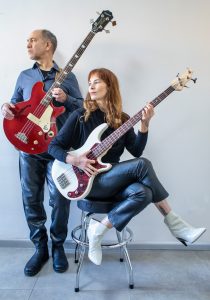The soprano and composer Sabina Meyer has found an inspiring musical base in Rome, where she can express her versatility. She combines improvisation with jazz, contemporary music, baroque music and electronics. Meyer also writes her own songs for the duo Cry Baby, in which she plays electric bass.
A portrait by Friederike Kenneweg.

Continue reading “Sabina Meyer – a voice for Scelsi and songs”

